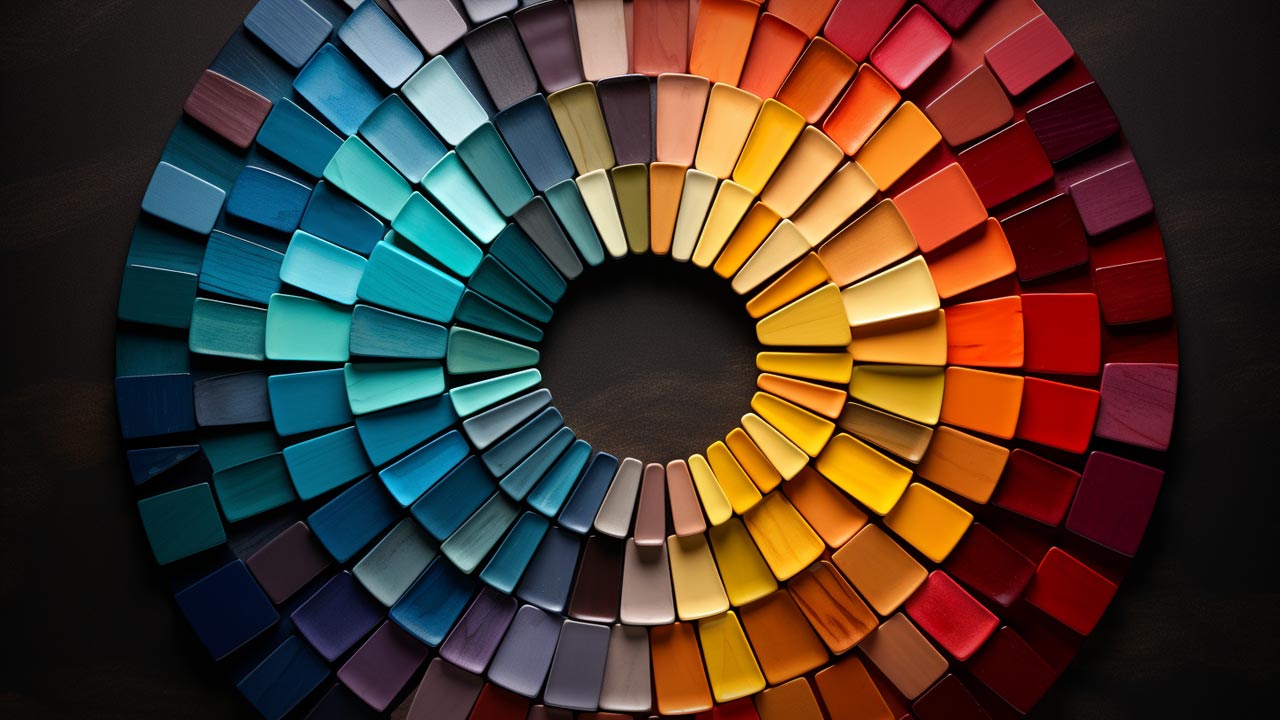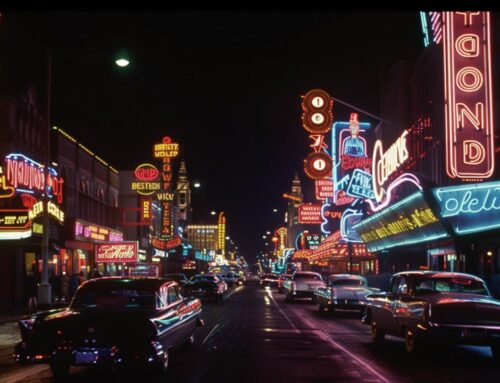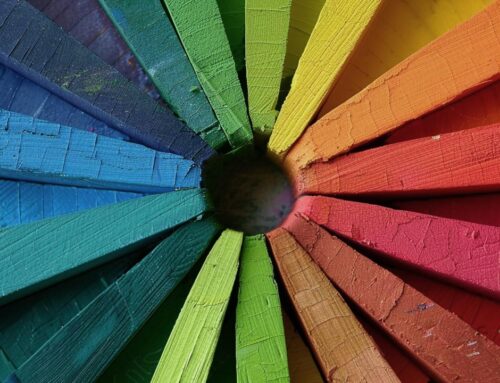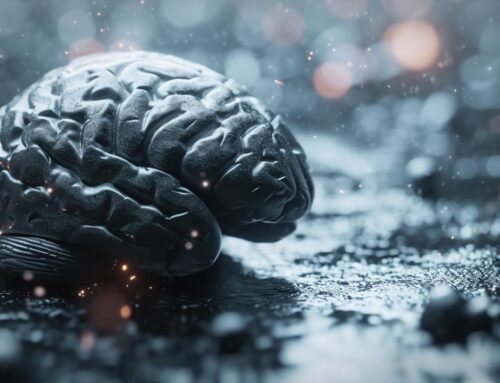In the vast spectrum of human experience, colors play an integral role in shaping our emotions, perceptions, and actions. From the clothes we wear to the brands we trust, colors influence our decisions and feelings, often without us even realizing it. This article delves deep into the psychology of colors, exploring how different hues can evoke specific emotions and reactions. Whether you’re a designer aiming to create an impactful visual, a marketer trying to build a brand, or simply a curious individual, understanding the emotional power of colors can be a game-changer. By the end of this article, you’ll have a comprehensive understanding of which colors trigger what emotions, backed by research, statistics, and expert opinions.
What Colors Trigger What Emotions?
Table of Contents
- The Science Behind Color Psychology
- Colors and Their Emotional Impact
- Frequently Asked Questions
- Final Thoughts
- Sources
The Science Behind Color Psychology
Color psychology is a fascinating and intricate field that delves into the ways colors influence human behavior, emotions, and even physiological responses. This multidisciplinary area of study intersects with various domains, including psychology, design, neurology, and even anthropology. Here’s a deeper dive into the science behind color psychology:
The Biological Perspective
From an evolutionary standpoint, our ancestors relied on color cues to survive. Bright colors in nature often signaled danger, such as a poisonous plant or a venomous animal, while neutral colors might have indicated safety or camouflage. Over time, these associations became deeply ingrained in the human psyche, leading to instinctual reactions to certain colors.
Furthermore, our eyes are designed to perceive colors in a specific way. The human retina contains photoreceptor cells called cones, which are sensitive to red, green, and blue light. The brain processes signals from these cones to interpret the vast spectrum of colors we see. This biological mechanism plays a role in how we emotionally and psychologically respond to colors.
Neurological Responses to Color
Colors can elicit specific neurological responses. For instance, studies using functional magnetic resonance imaging (fMRI) have shown that vibrant colors like red can activate the amygdala, the part of the brain responsible for processing emotions, more than muted colors can. This might explain why intense colors often evoke stronger emotional reactions.
Cultural Influences
While biology plays a role, culture significantly shapes our perceptions of color. For example, in many Western cultures, white is associated with purity and innocence, often seen in wedding dresses. In contrast, in some Eastern cultures, white is linked to mourning and death. These cultural associations can heavily influence the emotional and psychological impact of colors on individuals from different backgrounds.
Color in Therapeutic Settings
Color therapy, also known as chromotherapy, is an alternative treatment method where colors and lights are used to treat physical or mental health issues. While it’s considered a complementary therapy, there’s growing interest in understanding how specific colors can promote healing, reduce stress, or enhance well-being.
The Impact on Decision Making
Colors can influence our decisions and judgments. In marketing and branding, understanding color psychology is crucial. For instance, consumers might perceive a brand as more trustworthy if it uses blue in its logo, given blue’s associations with reliability and stability. Similarly, restaurants might use reds and yellows to stimulate appetite and create a sense of urgency.
The science behind color psychology is a blend of biology, culture, and individual experience. While certain color-emotion associations might be universal, many are shaped by personal experiences and cultural upbringing. As research in this field continues to grow, we gain a clearer understanding of the profound ways colors influence our lives.
Colors and Their Emotional Impact
Colors have an undeniable influence on our emotions and psyche. Their impact is evident in various aspects of our lives, from our personal choices in clothing and decor to broader applications in branding and marketing. Let’s delve deeper into the emotional nuances of specific colors:
Red
Red is one of the most dynamic and multifaceted colors in the spectrum. Its intensity and vibrancy make it a color that cannot be ignored. Historically, red has been used in various cultures to symbolize everything from celebration to caution. Let’s delve deeper into the intricacies of this powerful hue:
Historical Significance
Red has been a significant color throughout human history. Ancient civilizations used red pigments for art and decoration. In Roman times, generals wore red cloaks, and soldiers donned red tunics, symbolizing power and aggression. In China, red has always been associated with luck, prosperity, and happiness, especially evident in celebrations like the Lunar New Year.
Psychological Impact
From a psychological perspective, red can evoke strong emotions. It can stimulate the body, raising the blood pressure and heart rate. It’s associated with energy, movement, and excitement. However, it can also signify danger, leading to its use in stop signs and warning labels.
Positive Associations
- Love and Romance: Red roses are a universal symbol of love and passion.
- Warmth: It evokes feelings of warmth and comfort.
- Energy: Red is invigorating and denotes action and vigor.
- Power and Leadership: It’s often used in flags and national symbols to represent strength.
Negative Associations
- Danger: Red is universally used to indicate stop or caution, as in traffic lights and signs.
- Aggression: It can be associated with anger and hostility.
- Debt: The term “in the red” denotes financial loss or debt.
Cultural Interpretations
- Western Cultures: Red is the color of love, passion, danger, and power.
- Eastern Cultures: It symbolizes luck, joy, and happiness. In India, red is often associated with weddings and auspicious occasions.
- Middle Eastern Cultures: Red can represent caution or warning.
Usage in Branding and Marketing
Red is a favorite among marketers and advertisers due to its attention-grabbing quality. Brands like Coca-Cola, Netflix, and Target use red to create a sense of excitement and urgency. In sales, red is often used to signal discounts and promotions, urging consumers to take action.
In Fashion and Design
In fashion, a red dress or tie often makes a bold statement, symbolizing confidence and style. In interior design, red can be used to energize a space, but it’s often recommended to use it sparingly, given its intensity.
Wrapping Up Red:
Red is a testament to the power of color. Its multifaceted nature means it can symbolize love and danger, warmth and warning, all at once. Understanding the nuances of red and its impact on human psychology can be a powerful tool, whether you’re a designer, marketer, or simply someone looking to harness the energy and passion this color embodies.
Blue
Blue, often referred to as the color of the sky and sea, is a hue that resonates deeply with the human psyche. Its vast range, from the palest baby blue to the deepest navy, offers a spectrum of emotions and associations. Let’s explore the depth and breadth of this serene and versatile color:
Historical Significance
Throughout history, blue has held a special place in various cultures. Ancient Egyptians valued lapis lazuli, a deep blue stone, for its beauty and used it in jewelry and decorations. In the Renaissance, the blue pigment was expensive and rare, often reserved for depicting the Virgin Mary in art, symbolizing her purity and divinity.
Psychological Impact
Blue has a calming and soothing effect on the mind. It’s associated with feelings of tranquility and reliability. Psychologically, exposure to blue has been shown to reduce stress, lower heart rates, and create a sense of peace.
Positive Associations
- Calmness and Serenity: The vastness of the blue sky or the rhythmic waves of the ocean evoke feelings of peace and relaxation.
- Trust and Reliability: Blue is often associated with dependability and strength. It’s no surprise that many banks and financial institutions use blue in their branding.
- Wisdom and Stability: The phrase “true blue” signifies loyalty and faithfulness.
- Depth and Exploration: The deep blue of the ocean or the vastness of the sky symbolizes exploration and the unknown.
Negative Associations
- Coldness and Aloofness: Light shades of blue can sometimes feel cold or distant.
- Sadness: The term “feeling blue” denotes feelings of sadness or depression.
Cultural Interpretations
- Western Cultures: Blue is often associated with boys, trust, and authority. It’s also linked to feelings of sadness.
- Eastern Cultures: In China, blue is associated with immortality. In India, blue is the color of Krishna, a revered god, symbolizing divinity and spirituality.
- Middle Eastern Cultures: Blue is protective, often used to ward off evil with the “evil eye” amulets.
Usage in Branding and Marketing
Given its associations with trust and reliability, blue is a popular choice for corporate branding. Tech companies like Facebook, IBM, and Intel use blue to convey trustworthiness and innovation. It’s also prevalent in healthcare due to its calming and trustworthy nature.
In Fashion and Design
Blue is a staple in fashion, with denim being a universal favorite. It’s versatile, pairing well with various colors. In interior design, blue can create a serene and calming environment, making it a popular choice for bedrooms and bathrooms.
Wrapping Up Blue:
Blue, in its essence, is a color that offers a sense of solace and stability in an ever-changing world. Its universal appeal lies in its ability to evoke feelings of trust, calm, and depth. Whether you’re a designer aiming to create a peaceful space or a brand looking to establish trust, blue is a color that can transcend boundaries and resonate on a profound level.
Yellow
Yellow, often likened to the brilliance of the sun or the vibrancy of gold, is a color that exudes warmth, energy, and positivity. Its spectrum, ranging from soft pastels to intense, bright shades, encapsulates a myriad of emotions and associations. Let’s illuminate the multifaceted nature of this radiant hue:
Historical Significance
Historically, yellow has been a color of significance and reverence. In Ancient Egypt, yellow was associated with gold, which was considered the skin of the gods, symbolizing eternal and indestructible aspects. In Imperial China, yellow was the exclusive color of the emperor, representing his authority and divine status.
Psychological Impact
Yellow is a stimulating color that can uplift spirits and invigorate the mind. It’s associated with happiness, creativity, and mental clarity. However, it’s worth noting that while moderate amounts of yellow can be cheerful and energizing, excessive yellow can lead to feelings of agitation or overwhelm.
Positive Associations
- Joy and Happiness: Yellow is universally associated with cheerfulness and joy, reminiscent of sunny days and blooming flowers.
- Optimism: The color is linked to positivity and hope, often symbolizing a fresh start or a bright future.
- Creativity: Yellow stimulates the brain, promoting creativity, and innovative thinking.
- Energy: The vibrancy of yellow can invigorate and energize spaces and moods.
Negative Associations
- Caution: Yellow is often used in warning signs and signals due to its high visibility.
- Anxiety: Overexposure to bright yellow can increase feelings of stress or anxiety.
- Deceit: In some contexts, yellow can be associated with cowardice or deceit, as in the term “yellow-bellied.”
Cultural Interpretations
- Western Cultures: Yellow is associated with happiness, warmth, and sometimes caution (as in traffic lights).
- Eastern Cultures: In China, yellow represents neutrality and good luck. In Japan, it stands for courage and protection.
- Middle Eastern Cultures: Yellow has religious connotations and is often linked to happiness and prosperity.
Usage in Branding and Marketing
Yellow is used by brands to grab attention and convey a sense of happiness and energy. Companies like McDonald’s, IKEA, and Snapchat use yellow to create a sense of warmth and accessibility. In marketing, yellow can be used to highlight essential information or create a sense of urgency.
In Fashion and Design
In fashion, yellow can make a bold statement, symbolizing confidence and individuality. It’s a color that can stand out, especially in spring and summer collections. In interior design, yellow can brighten up spaces, making them feel welcoming and lively. However, it’s often recommended to use yellow as an accent color rather than the primary hue due to its intensity.
Wrapping Up Yellow:
Yellow, with its inherent brightness and warmth, has the power to uplift, energize, and inspire. Its versatility means it can symbolize everything from joy and creativity to caution and attention. Understanding the nuances of yellow and its impact on human emotions can be a powerful tool for anyone looking to evoke specific feelings, whether in design, branding, or everyday life.
Green
Green, a color that instantly evokes images of lush forests, verdant hills, and the freshness of nature, is a hue deeply rooted in our connection to the Earth. Its diverse shades, from the palest mint to the darkest emerald, encompass a range of emotions and meanings. Let’s delve into the multifaceted world of this rejuvenating color:
Historical Significance
Throughout history, green has held a place of importance in various cultures. In Ancient Egypt, green was the symbol of rebirth and regeneration. The Romans revered the color, associating it with Venus, the goddess of love and gardens. In medieval times, green was often worn by merchants and bankers, symbolizing wealth and status.
Psychological Impact
Green is known for its calming and restorative properties. It’s a color that can reduce stress, help with relaxation, and promote a sense of balance. The color’s association with nature and the outdoors gives it a refreshing and revitalizing quality.
Positive Associations
- Nature and Environment: Green is synonymous with nature, representing growth, renewal, and life.
- Health and Wellness: The color is often linked to health, healing, and well-being, making it popular in medical and wellness industries.
- Harmony and Balance: Green’s calming effect promotes feelings of harmony, balance, and equilibrium.
- Prosperity: Historically, and even in modern times, green is associated with wealth, abundance, and prosperity.
Negative Associations
- Jealousy and Envy: Phrases like “green with envy” highlight the color’s association with jealousy.
- Inexperience: Being “green” is a colloquialism for being new or inexperienced in a particular field.
- Stagnation: While green represents growth, its darker shades can sometimes be associated with stagnation or lethargy.
Cultural Interpretations
- Western Cultures: Green is linked to luck (four-leaf clovers), nature, and money. It’s also associated with environmental movements and sustainability.
- Eastern Cultures: In China, green can symbolize health and harmony. In Islamic cultures, green is revered and is often associated with paradise in religious contexts.
Usage in Branding and Marketing
Green is a popular choice for brands that want to convey growth, health, or an environmental consciousness. Companies like Starbucks, Whole Foods, and The Body Shop use green to emphasize their commitment to quality, health, and sustainability. In marketing, green can be used to promote eco-friendly products or emphasize natural ingredients.
In Fashion and Design
In fashion, green is versatile and can be used to create a range of looks, from earthy and natural to vibrant and bold. In interior design, green can bring a touch of the outdoors inside, creating a calming and rejuvenating atmosphere. It’s often used in spaces meant for relaxation, like bedrooms and living rooms.
Wrapping Up Green:
Green, with its myriad shades and meanings, is a testament to the beauty and complexity of nature. Its associations with growth, health, and harmony make it a color that resonates deeply with many. Whether you’re looking to create a sense of calm, promote eco-friendliness, or convey growth and prosperity, green offers a palette of possibilities.
Purple
Purple, a color that dances between the fiery passion of red and the tranquil depths of blue, is a hue that has long been associated with mystery, luxury, and transformation. Its spectrum, from the softest lavender to the most regal indigo, captures a realm of emotions and connotations. Let’s journey into the enigmatic world of this majestic color:
Historical Significance
Purple’s historical significance is deeply tied to its rarity in nature and the difficulty of producing its dye. In ancient times, the most prized purple dye came from the city of Tyre in modern-day Lebanon, extracted from a small mollusk. Given the labor-intensive process and the vast number of mollusks required, purple garments became symbols of extreme wealth and power.
Psychological Impact
Purple is often associated with introspection, intuition, and the subconscious. Its presence can evoke deep contemplation or meditation, making it a color that resonates with spirituality and the mysteries of the universe.
Positive Associations
- Royalty and Luxury: Due to its historical rarity and cost, purple is synonymous with royalty, nobility, and luxury.
- Creativity and Imagination: The color is often linked to artistic expression, creativity, and the world of dreams.
- Spirituality and Enlightenment: Purple is associated with the higher self, spiritual insight, and a connection to the divine.
- Transformation and Healing: In some cultures and contexts, purple symbolizes transformation, healing, and rebirth.
Negative Associations
- Melancholy and Mourning: Darker shades of purple can sometimes be linked to feelings of sadness or introspection.
- Decadence and Overindulgence: Given its association with luxury, purple can also signify excess and decadence.
Cultural Interpretations
- Western Cultures: Purple is linked to royalty, spirituality, and sometimes mourning.
- Eastern Cultures: In some Asian cultures, purple is associated with wealth and nobility. In Japan, it can also symbolize privilege and rank.
Usage in Branding and Marketing
Purple is often used by brands that want to convey luxury, elegance, or a touch of the mystical. Companies like Cadbury, Hallmark, and Twitch use purple to stand out and create a sense of distinction. In marketing, purple can be used to promote luxury products, spiritual services, or anything related to creativity and imagination.
In Fashion and Design
In fashion, purple can make a bold statement, symbolizing individuality and avant-garde style. It’s a color that can be both regal and rebellious. In interior design, purple can add depth and richness, creating spaces that feel luxurious and contemplative. Lighter shades like lavender can bring a touch of softness and romance to a room.
Wrapping Up Purple:
Purple, with its rich history and multifaceted meanings, is a color that captivates and intrigues. Its associations with royalty, spirituality, and creativity make it a color that can inspire and elevate. Whether you’re looking to convey luxury, tap into the mysteries of the cosmos, or simply make a bold statement, purple offers a palette that is as deep as it is diverse.
Orange
Orange, a color that bursts forth with the energy of the sun and the zest of citrus fruits, is a hue that embodies vitality, warmth, and enthusiasm. Straddling the line between the fiery passion of red and the radiant joy of yellow, orange is a color that invigorates and stimulates. Let’s delve into the vibrant world of this spirited color:
Historical Significance
Historically, orange has been associated with the exotic and the precious. In many ancient cultures, orange pigments were derived from rare sources, such as specific minerals or spices like saffron. This made orange-colored items a sign of wealth and status.
Psychological Impact
Orange is a color that can uplift and energize. It stimulates both mental activity and appetite, making it a color that can encourage interaction, conversation, and exploration. Its presence can evoke feelings of warmth, comfort, and motivation.
Positive Associations
- Energy and Enthusiasm: Orange exudes a vivacious energy, often associated with movement, excitement, and adventure.
- Warmth and Comfort: The color brings to mind the warmth of a glowing sunset or a cozy fireplace.
- Creativity and Expression: Orange is linked to free expression, creativity, and a break from convention.
- Optimism and Positivity: The color radiates a positive, can-do attitude, often associated with optimism and looking forward.
Negative Associations
- Frivolity and Superficiality: Due to its vibrant nature, orange can sometimes be seen as lacking seriousness or depth.
- Overstimulation: In large amounts or particularly bright shades, orange can be overwhelming and overly stimulating.
Cultural Interpretations
- Western Cultures: Orange can be associated with autumn, harvest, and change. It’s also used to represent visibility and caution, as seen in safety vests and traffic cones.
- Eastern Cultures: In Hinduism, saffron orange is sacred and represents purity and spirituality. In Buddhist traditions, orange robes are worn by monks, symbolizing simplicity and detachment from materialism.
Usage in Branding and Marketing
Orange is a favorite for brands aiming to appear friendly, energetic, and approachable. Companies like Home Depot, Fanta, and Nickelodeon use orange to convey a sense of fun, creativity, and energy. In marketing, orange can be used to draw attention, promote action, or highlight key elements.
In Fashion and Design
In fashion, orange can be a bold and daring choice, symbolizing confidence and individuality. It’s a color that can stand out, especially in spring and summer collections. In interior design, orange can add a pop of energy and warmth, making spaces feel lively and inviting. However, due to its intensity, it’s often recommended to use orange as an accent rather than the dominant color.
Wrapping Up Orange:
Orange, with its inherent zest and vitality, is a color that can inspire, motivate, and uplift. Its associations with energy, warmth, and creativity make it a hue that resonates deeply with those looking to make a statement or simply bring a touch of sunshine into their lives. Whether in design, branding, or daily life, orange offers a palette of possibilities that is as invigorating as it is enticing.
Black
Black, a color often described as the absence of light, is a hue that carries with it a depth of symbolism, emotion, and cultural significance. It’s a color that can simultaneously represent power and void, elegance and enigma. Let’s explore the profound and multifaceted world of this timeless color:
Historical Significance
Throughout history, black has been a color of duality. In ancient civilizations, it was both a symbol of fertility (due to the rich, black soil) and death (due to the darkness of the underworld). In medieval Europe, black was often associated with mystery and the unknown, leading to its connection with witchcraft and the occult.
Psychological Impact
Black is a color that can evoke strong emotions. It can provide a sense of power, sophistication, and seriousness. On the other hand, it can also evoke feelings of melancholy, emptiness, and mourning.
Positive Associations
- Elegance and Sophistication: Black is synonymous with formal events and high fashion. The “little black dress” or a black-tie event signifies elegance and timelessness.
- Strength and Authority: Black exudes power, authority, and strength. It’s often used in professional settings to convey seriousness and formality.
- Mystery and Depth: The color is linked to the unknown, the mysterious, and the introspective.
- Protection and Comfort: Black can provide a sense of security and protection, often seen as a shield against negativity.
Negative Associations
- Mourning and Loss: In many cultures, black is the color of mourning, symbolizing death and loss.
- Fear and Evil: Black is often associated with darkness, fear, and malevolence, as seen in terms like “black magic” or “blacklist.”
- Emptiness and Void: The absence of color can signify emptiness, loneliness, or a void.
Cultural Interpretations
- Western Cultures: Black is commonly associated with mourning, formality, and sophistication. It’s also linked to rebellion, as seen in subcultures like goth or punk.
- Eastern Cultures: In China, black is linked to water, one of the five fundamental elements, and is associated with winter and the north. In some Asian cultures, black can symbolize wealth, health, and prosperity.
Usage in Branding and Marketing
Black is a popular choice for luxury brands aiming to convey sophistication, exclusivity, and elegance. Brands like Chanel, Gucci, and Apple use black to create a sense of luxury and timeless appeal. In marketing, black can be used to add a touch of elegance or to create contrast, making other colors pop.
In Fashion and Design
In fashion, black is a staple, known for its slimming effect and its ability to pair with almost any other color. It’s a color that can be both edgy and classic. In interior design, black can add depth and drama to a space, often used in modern and minimalist designs to create contrast and anchor a room.
Wrapping Up Black:
Black, with its depth and complexity, is a color that transcends trends. Its associations with power, elegance, and mystery make it a color that resonates on multiple levels. Whether used to convey sophistication, evoke emotion, or make a bold statement, black offers a palette that is as profound as it is versatile.
White
White, often perceived as the purest of colors, is a hue that embodies clarity, simplicity, and beginnings. It’s a color that reflects all light, standing as a beacon of purity, neutrality, and possibility. Let’s journey into the ethereal and multifaceted realm of this luminous color:
Historical Significance
Throughout history, white has been revered and utilized for its symbolic purity and sanctity. In ancient civilizations, white animals were often seen as sacred and were used in various rituals. In medieval Europe, white was the color of the divine, with angels and saints frequently depicted in white robes.
Psychological Impact
White is a color that can evoke feelings of cleanliness, freshness, and clarity. It provides a sense of peace and calm, often used to signify a fresh start or a clean slate. Its simplicity can also convey efficiency and precision.
Positive Associations
- Purity and Innocence: White is universally associated with purity, innocence, and virtue. This is evident in cultural practices like wearing white wedding dresses.
- Simplicity and Clarity: The color stands for simplicity, minimalism, and clarity, often used to declutter and bring focus.
- Peace and Harmony: White doves are symbols of peace and harmony, and a white flag is universally recognized as a sign of truce.
- Enlightenment and Divinity: In many spiritual practices, white signifies enlightenment, divinity, and the higher self.
Negative Associations
- Sterility and Coldness: While white can signify cleanliness, it can also feel sterile, cold, and impersonal if overused.
- Isolation and Emptiness: The vastness of a white expanse can sometimes evoke feelings of isolation or emptiness.
Cultural Interpretations
- Western Cultures: White is associated with purity, peace, and innocence. It’s commonly used in weddings and christenings.
- Eastern Cultures: In countries like China and Korea, white is traditionally associated with mourning and death, often worn during funerals. However, it’s also linked to purity and simplicity.
- Middle Eastern Cultures: White is seen as a color of purity and is often worn to signify cleanliness and piety.
Usage in Branding and Marketing
White is often used by brands aiming for a clean, modern, and minimalist aesthetic. Brands like Apple, Tesla, and Calvin Klein utilize white to convey simplicity, innovation, and elegance. In marketing, white space (or negative space) is a crucial design element, used to draw attention to specific content and create a balanced, uncluttered look.
In Fashion and Design
In fashion, white is versatile, signifying elegance, simplicity, or avant-garde style, depending on its use. In interior design, white can open up spaces, making them feel larger and brighter. It provides a neutral backdrop, allowing other colors or design elements to take center stage.
Wrapping Up White:
White, with its inherent luminosity and purity, is a color that offers endless possibilities. Its associations with clarity, simplicity, and new beginnings make it a hue that can inspire, soothe, and rejuvenate. Whether used to convey purity, create a sense of space, or highlight other elements, white offers a palette that is as refreshing as it is timeless.
Frequently Asked Questions
Final Thoughts
Colors are more than just visual stimuli; they’re powerful tools that can evoke deep-seated emotions and reactions. Understanding the emotional impact of colors is crucial for anyone in the fields of design, marketing, or branding. The key takeaway is to be mindful of the colors you choose, as they can significantly influence the message you’re trying to convey and the emotions you want to evoke.
Sources
- Pantone Color Institute. (2019). The Psychological Impact of Colors. Link
- Adams, F. M., & Osgood, C. E. (1973). A cross-cultural study of the affective meanings of color. Journal of Cross-Cultural Psychology, 4(2), 135-156. Link
- Elliot, A. J., & Maier, M. A. (2014). Color psychology: Effects of perceiving color on psychological functioning in humans. Annual Review of Psychology, 65, 95-120. Link









Leave A Comment